Tire Size 31×10.50r15 vs 235/75r15
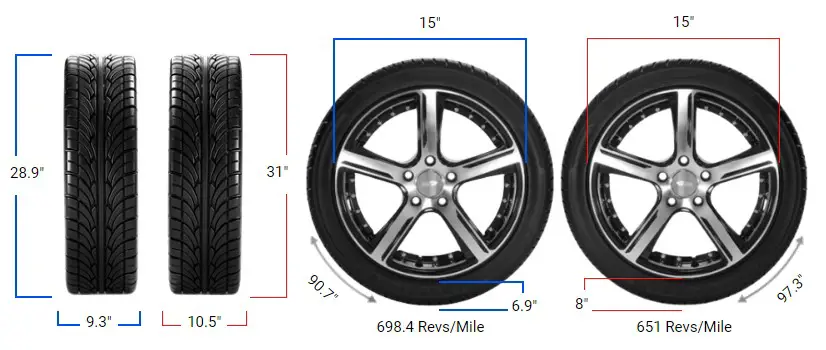
The main difference between the two tire sizes is the overall diameter. The 31×10.50r15 tire size is about 2.1 inches larger than the 235/75r15 tire size. This means the 31×10.50r15 tire is larger in diameter, providing more ground clearance and better off-road performance.
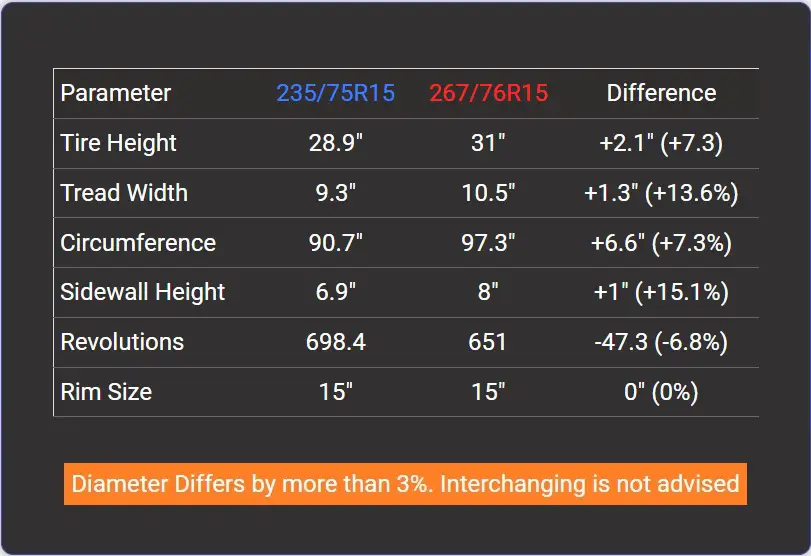
Fitment Guide
The new set should be within 3% of the vehicle’s original tire diameter when replacing tires to prevent clearance or speedometer issues.
At 6.8% smaller, the 235/75r15 falls outside this range compared to the 31×10.50r15. Larger 31-inch tires may require a suspension lift to accommodate their size if you want to interchange with 235/75r15.
Ground Clearance
With a diameter of 2.1 inches taller, the 31×10.50r15 provides substantially more ground clearance – advantageous for off-road driving over rough terrain. However, this can also cause a lower speedometer reading.
The 235/75r15 smaller diameter reduces clearance, increasing the risks of scraping on obstacles but giving a higher speedometer reading.
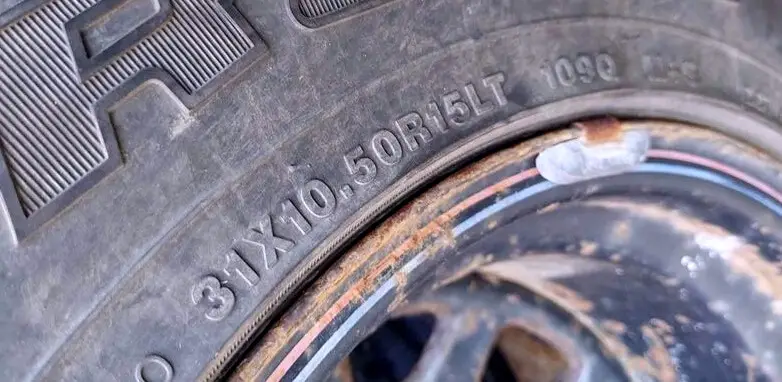
Gas Mileage
The smaller 235/75r15 likely delivers better fuel efficiency thanks to its more minor contact patch and lower rotational mass compared to the heavier 31×10.50r15.
Larger tires with more rolling resistance usually detract from gas mileage.
Ride Comfort
While the narrower 235/75r15 may transmit more road imperfections into the cabin, the 31×10.50r15 over 7-inch sidewall height absorbs impacts very well.
This cushier ride is comfortable off-road but can feel loose at highway speeds.
Aesthetics
The squared-off 31×10.50r15 has an aggressive, masculine look fitting for trucks and Jeeps. Meanwhile, the 235/75r15 smaller diameter and narrower width give a lower, sleeker aesthetic.
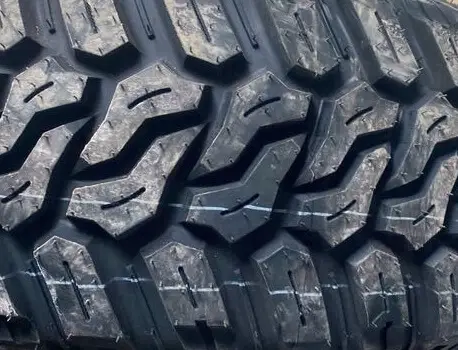
Handling & Stability
With a shorter, stiffer sidewall, the 235/75r15 provides responsive steering and handling precision on the pavement. In contrast, the flexible 31×10.50r15 is less nimble but offers stability off-road.
Noise & Vibration
The 31×10.50r15 thick sidewall and tread dampen road noise and impacts, while the 235/75r15 readily transmits more vibrations into the cabin from its shorter sidewall.
Durability & Wear
The narrower 235/75r15 should offer even treadwear, while the wider 31×10.50r15 is more prone to irregular wear, given its square shape. The lighter 235 may also stress components less.
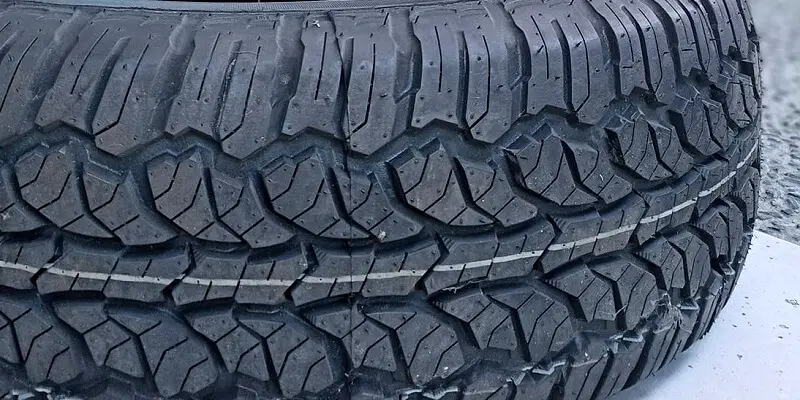
Adverse Conditions
Here, the 31×10.50r15 excels with its grippy tread offering traction off-road, whereas the narrower 235/75r15 handles better on snow and ice. Both perform well overall.
Speedometer Reading
At an actual 20 mph speed, the 31×10.50r15 reads 20 mph on the speedometer, while the 235/75r15 reads 18.64 mph due to the diameter difference. Replacement tires should stay within 3% to minimize inaccuracy.
What Does 31×10.50r15 Tire Mean?
The 31 in a 31×10.50r15 tire size means that the tire has a diameter of 31 inches. The number 10.5 means the section width of the tire is 10.5 inches.
The “R” in the size means that it is a radial tire. The number 15 is the wheel size or the size of the wheel that the tire will fit on. The metric equivalent of the 31×10.50R15 tire size is 265/65R15.
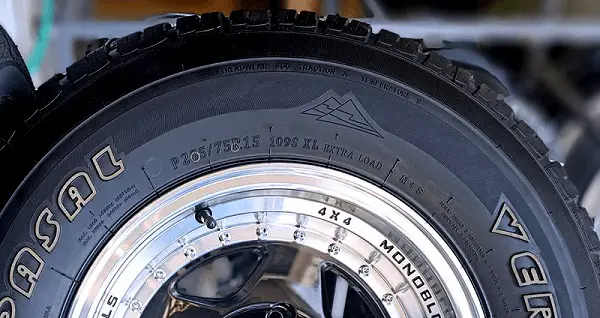
What Does 235/75r15 Tire Mean?
The first number 235, in a 235 75r15 tire size, means that the width of the tire is 235 millimeters. The second number, 75, is called the aspect ratio, and it means that the sidewall height is 75% of the width.
The “R” in 235 75r15 again means that it is a radial tire. The last number, 15, is the wheel or rim size that this tire will fit on. The tire denoted as 235/75r15 is identical to 28.9×9.3R15 in inches.
Is 235 75r15 The Same As 31×10.50r15?
No, 235/75r15 and 31×10.50R15 are not the same. The 31×10.50R15 tire size is about 2.1 inches larger in diameter than the 235/75r15 tire size, and the speedometer difference is 6.8%.
The 31×10.50R15 tire is also wider than the 235/75r15 tire, with a section width of 10.51 inches compared to 9.25 inches.
What Size Rim For 31×10.5r15?
The recommended rim size for a 31×10.5R15 tire is a 15-inch diameter rim with a rim width range of 7.00 to 9.00 inches. This rim size provides a good balance between tire stability and vehicle performance.
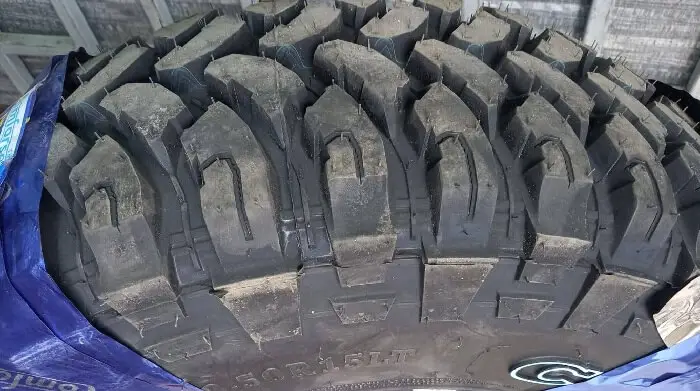
How Much Taller Is A 31×10.50R15 Tire Than A 235/75r15?
The 31×10.50R15 tire is 2.1 inches or 53.34 mm taller than the 235/75R15 tire. This means that the overall diameter of the 31-inch tire is 7.3% greater than that of the 235/75R15 tire.
The 31-inch tire measures 30.98 inches or 786.84 mm in height, while the shorter 235/75R15 measures only 28.88 inches or 733.5 mm in height.
The 31-inch all-terrain tire is often preferred for trucks, SUVs, and Jeeps for its rugged appearance and improved ground clearance.
How Much Wider Is A 31×10.50R15 Tire Than A 235/75r15?
The 31×10.50R15 tire is 1.26 inches (32 mm) wider than the 235/75R15 tire, which equates to a 13.6% increase in overall width.
The 31-inch off-road tire measures 10.51 inches (267 mm) wide, while the narrower highway tire measures only 9.25 inches (235 mm) across its tread.
What Size Rim For 235/75R15?
The recommended rim width for a 235/75R15 tire is typically in the range of 6.5 to 8.5 inches, with 7 inches being a common choice. This range allows for proper tire fitment and performance.
Our Observation
Overall, both the 31×10.50r15 and 235/75r15 tires have merits depending on the intended use. The slightly larger 31×10.50r15 provides more clearance and capability for off-road and rugged terrain at a small cost to on-road performance.
Meanwhile, the 235/75r15 promotes better handling, comfort, and efficiency on paved roads. These differences are minor but can matter depending on priorities.
Given the versatility and capability of larger tire sizes, we recommend the 31×10.50r15 for most trucks and SUVs intended for mixed-on and off-road use. Its added clearance and traction provide an advantage while slightly compromising street performance.

Meet Caitlin McCormack, a Tire Size Expert and Blogger Passionate About Everything Related to Tires. With Years of Experience in the Tire Industry, Caitlin Has Become an Expert in Tire Sizes and Their Impact on Vehicle Performance.
